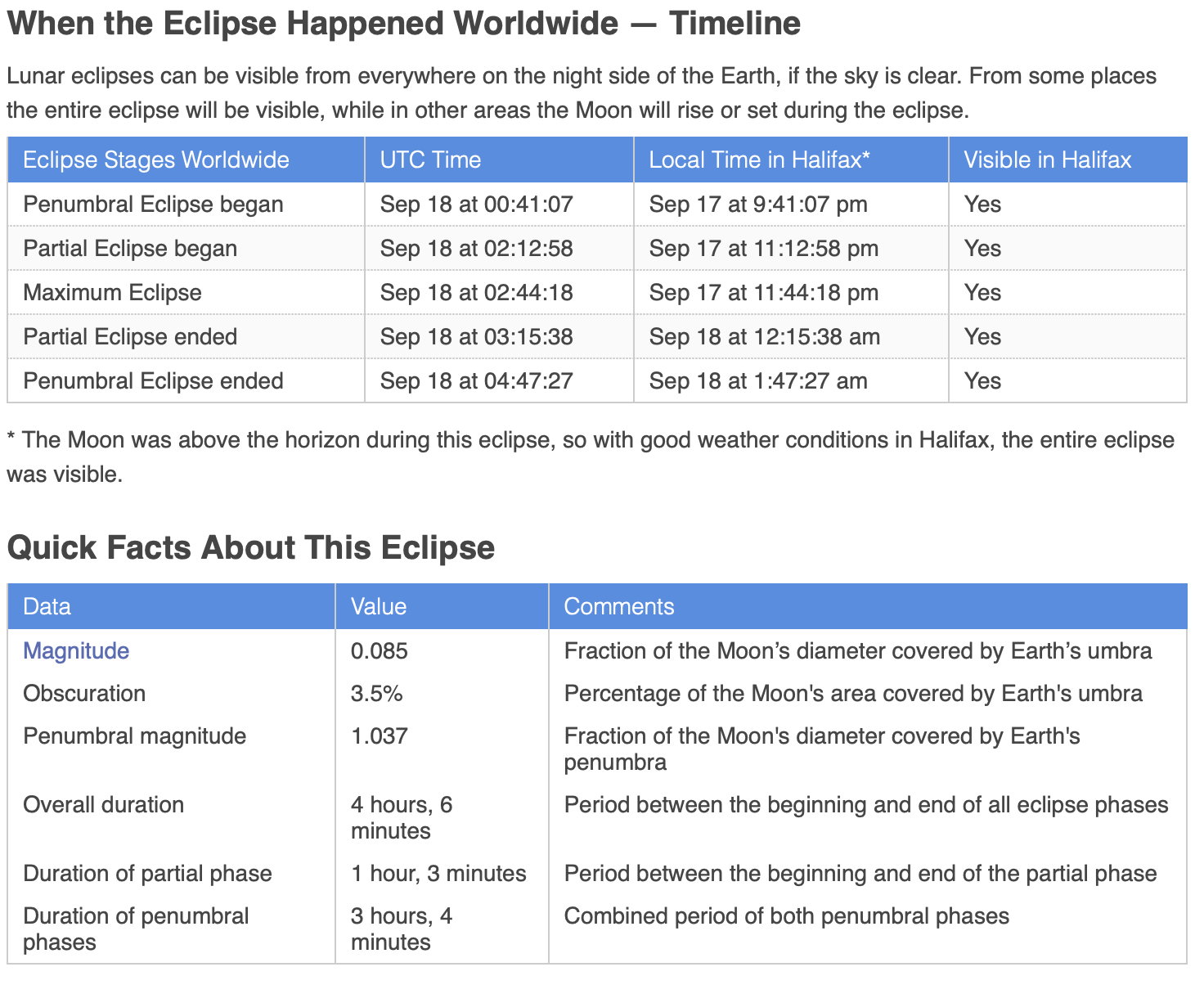Partial Lunar Eclipse
Constellation: Aquarius
Stars: Albireo (ß1 & ß2)
Planets: Saturn + Titan & Rhea
Did not Find: NGC 6802
IWLOP: #21 Sinus Concordiae, #57 Linné, L9 Ulugh Leigh & Aston
It's not often you get to see a partial lunar eclipse and have the sky conditions allow it to be viewed. We had 3 methods to observe it at its various stages - visual, binocular, telescope - and Jerry had his camera set up to take photos to produce a time-lapse video. During the wait between changes on the lunar surface, we looked up to see what we could see.
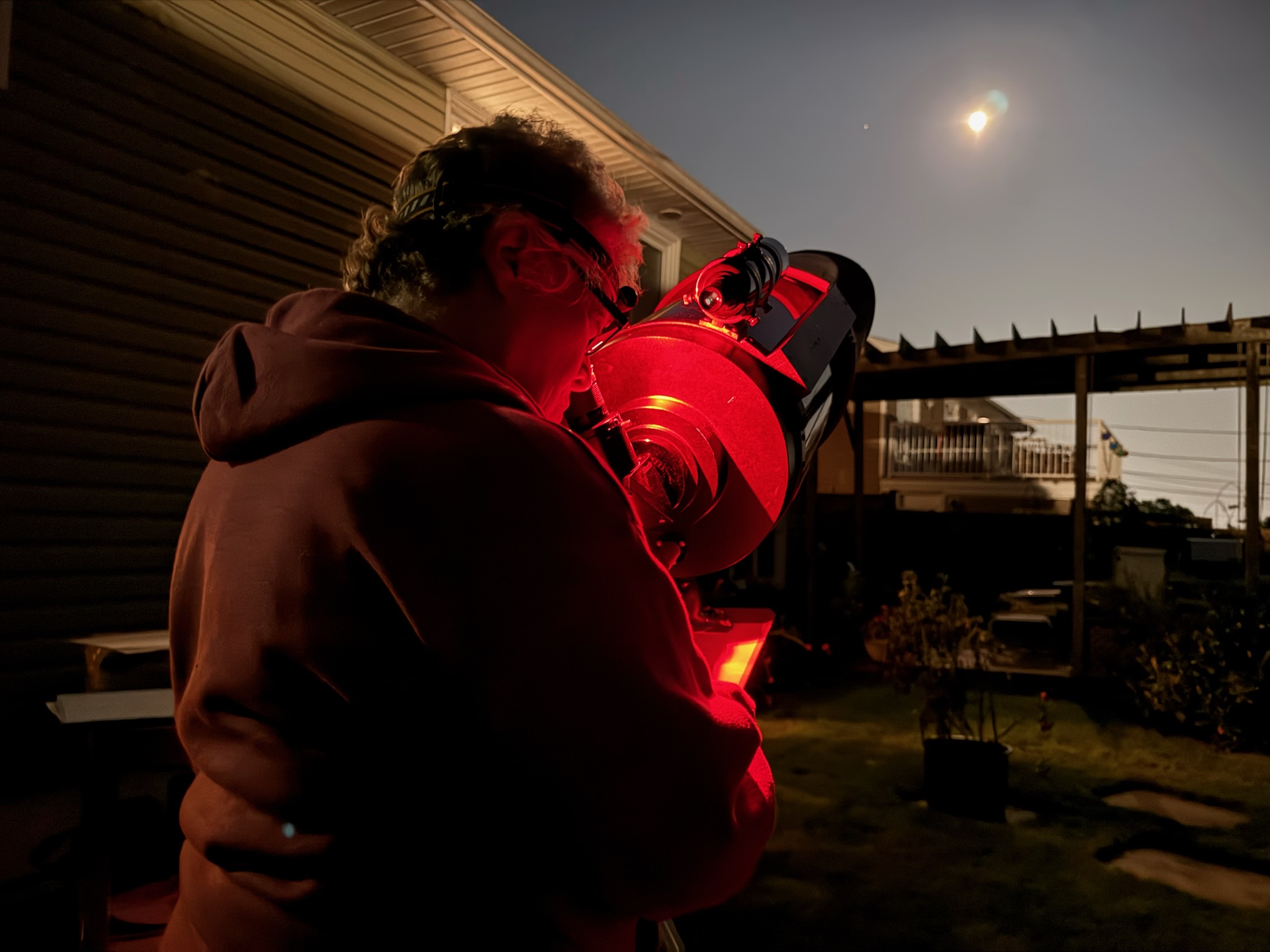
|
Location: Home Date: 2024-17/18, 2024 Time: 9:00 PM - 1:50 AM Equipment: Visual, 10x42 IS Binoculars, 10" Meade SCT, Eyepieces: 10mm-30mm Scientific American Zoom eyepiece, 12mm, 40mm Temperature: 22° C - 16° C Seeing: Fair (4) Transparency: Fair (4) |
9:00 PM: The Moon was just above our neighbour's roofline but not high enough yet to be seen where our scope was located. Jerry began to polar align the 10" Meade SCT and then realized he also had to align the finder scope with the scope. This took some time to accomplish.
9:10 PM: I noticed a line/curve of smoke (or very high cirrus clouds) extending from Arcturus to a little beyond Deneb. Hopefully the forecasted smoke wouldn't have a great effect on our view. So, while waiting for the Moon to appear in our FOV....
| Albireo Time: 9:17 PM ADT Equipment: Telescope S&T Chart Reference: 62 Eyepiece: Tele Vue 12mm (90° FOV) Magnification: x208 After completing the polar alignment, we used the go-to to find Albireo. We weren't disappointed. The yellow-gold β Cygni A was the larger of the two and the blue-green β Cygni B was at 10 o'clock to A. I sketched the star field in the FOV but could not identify all the stars in. |
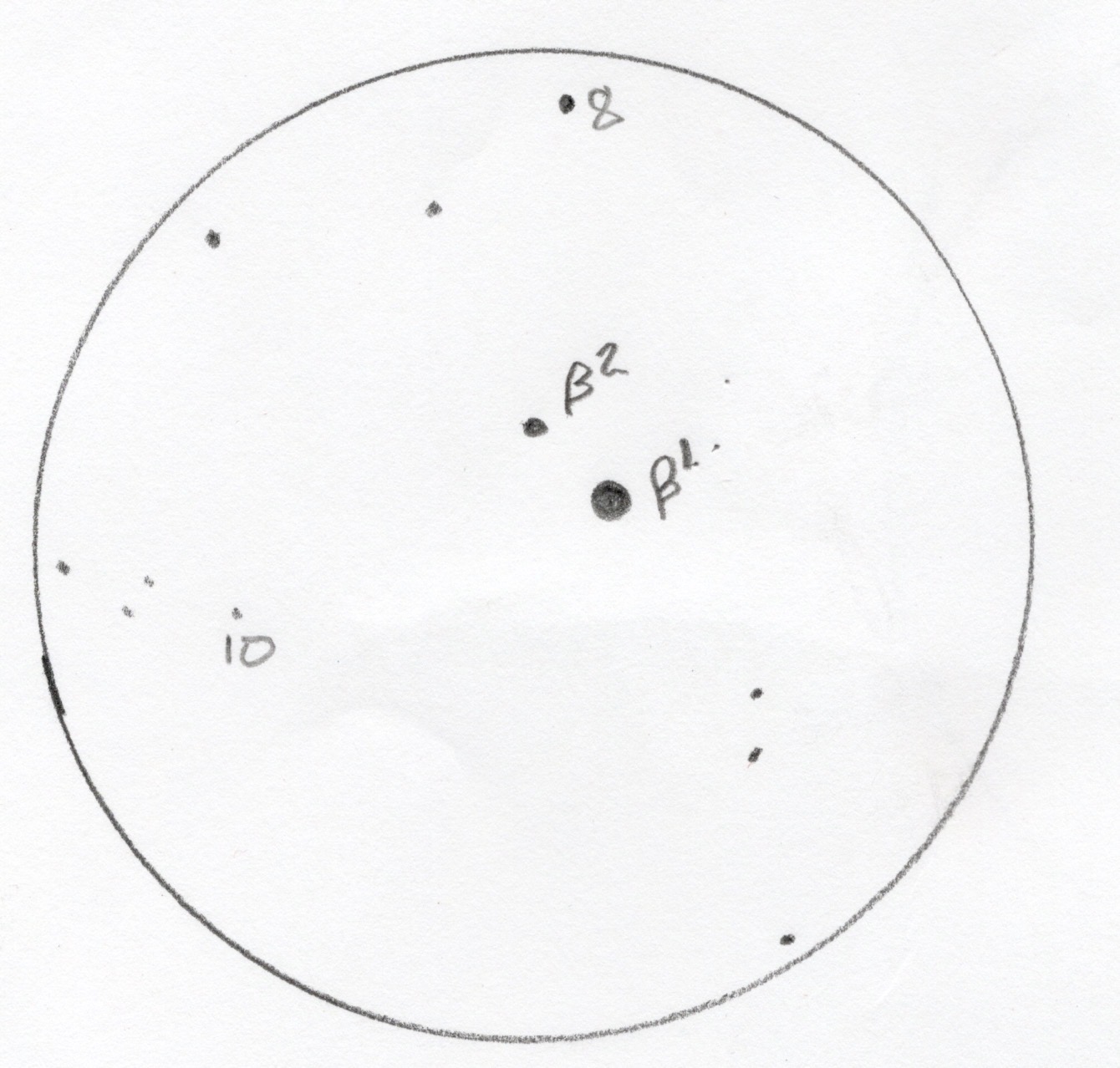 |
NGC 6802 / Coathanger Cluster
Time: 9:30 PM ADT
S&T Chart Reference: 64, 65
Equipment: Telescope
Eyepiece: Tele Vue 12 mm (90° FOV)
Magnification: x208
I discovered this open cluster butting against the Coathanger at the St. Croix Observatory (with Chris Young and his sister Cathy). My Evostar 80ED did not have "CR" as a choice so we tried to find an NGC nearby - et voila! Unfortunately, the seeing this evening did not allow us to find it. The Coathanger wasn't visible by any of our 3 observing methods. Got to love smoke/clouds!
IWLOP #021: Sinus Concordiae
Time: 10:06 PM ADT
Equipment: Telescope
Eyepiece: Tele Vue 12 mm (90° FOV)
Magnification: x208
although viewed several times it had never been 'officially' identified. The IWLOP suggested viewing this at or near the full moon, so this was the perfect night - Full Moon 'Supermoon' at 100% no less! For details, go to IWLOP #021 - Sinus Concordiae.
IWLOP #057: Linné
Time: 10:38 PM ADT
Equipment: Telescope
Eyepiece: Tele Vue 12 mm (90° FOV)
Magnification: x208
This second viewing of Linné was 1 hour before the full Supermoon. For details, go to IWLOP #057 - Linné.
|
Saturn (in Aquarius) |
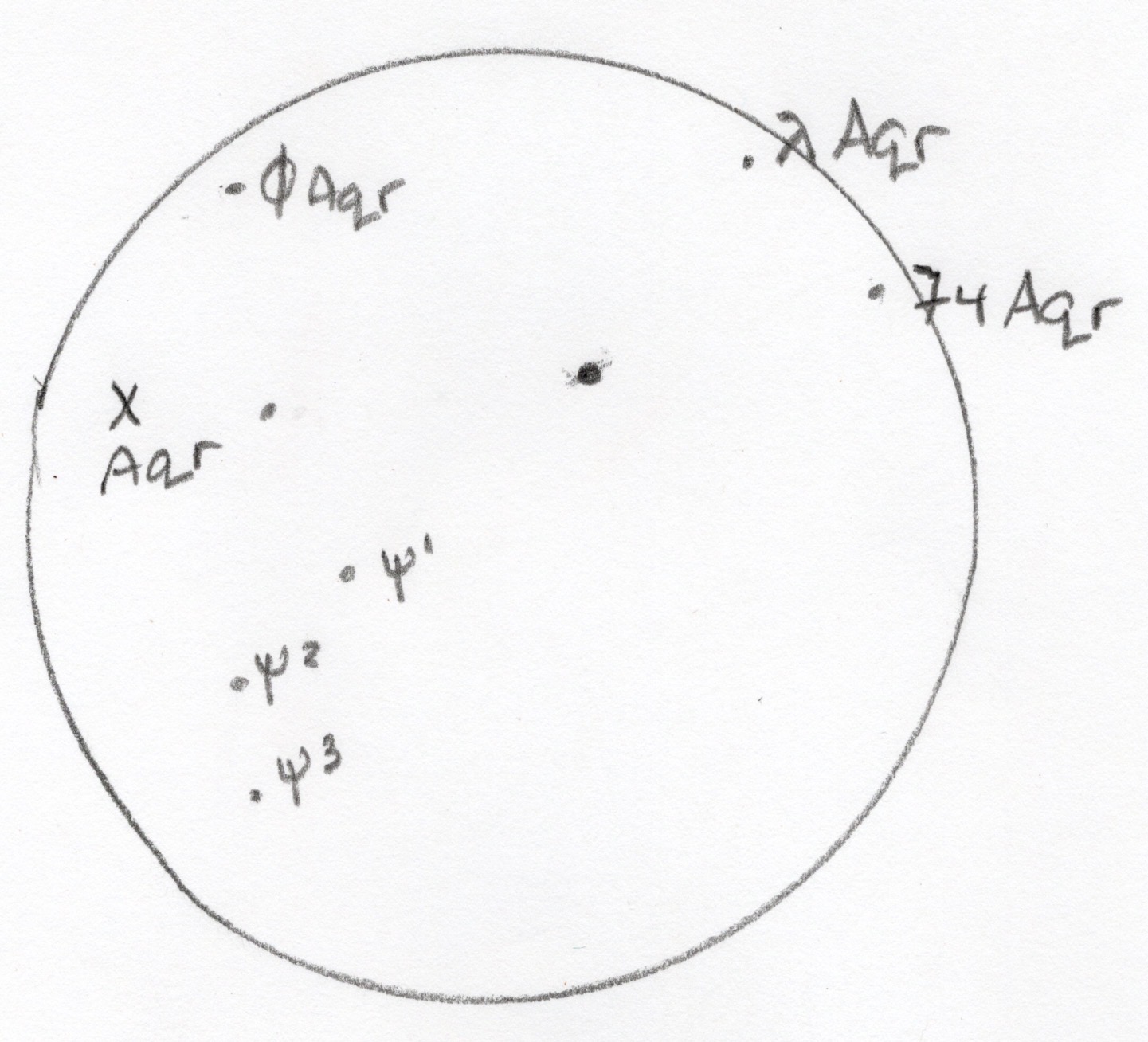 |
|
Time: 11:52 PM ADT, 1:48 AM ADT |
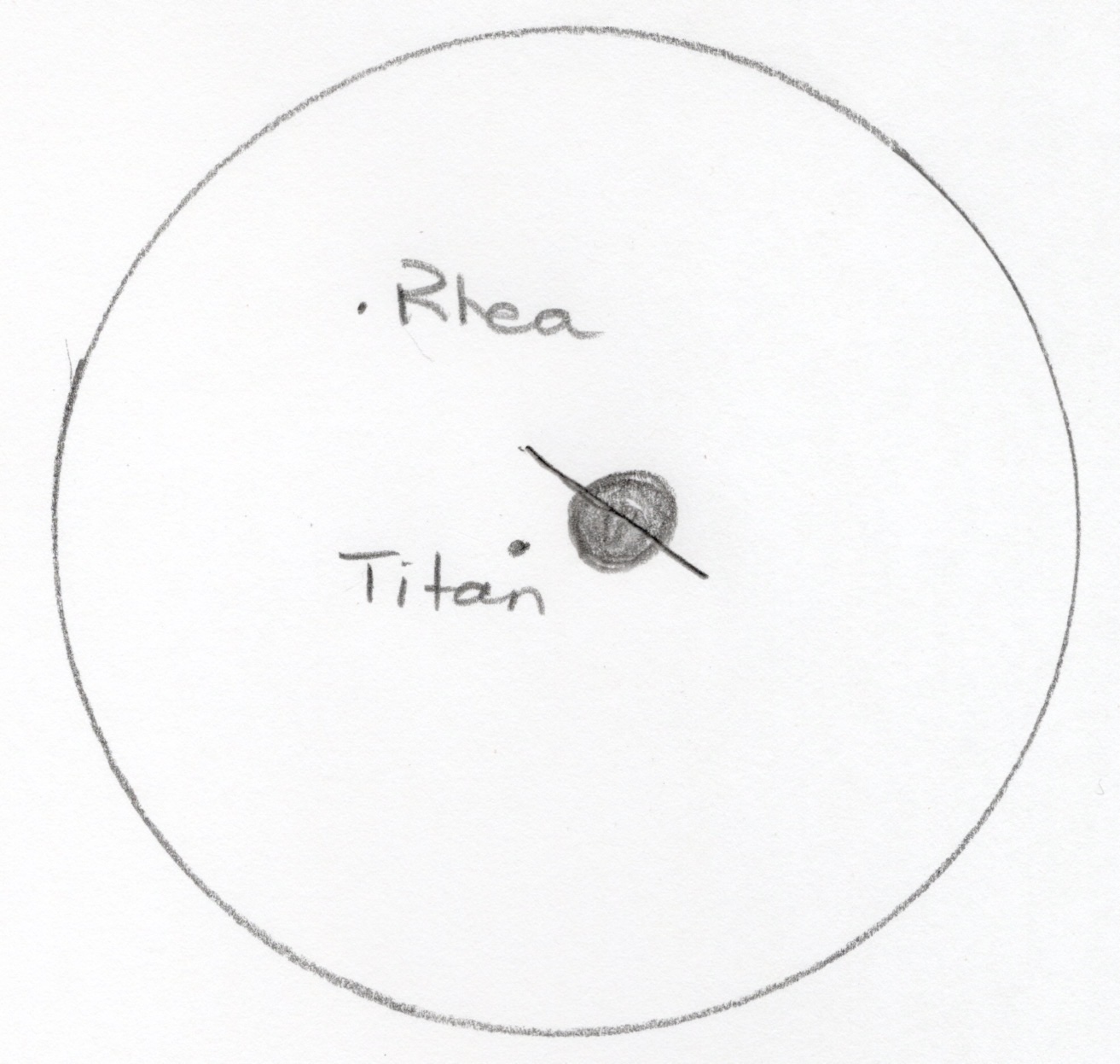 |
Time: 3:04 AM ADT
Equipment: 10x42 IS Binoculars
I woke, looked out the bedroom window, and used my binoculars to view Saturn that was now S-SW above our trees. Could only see the planet.
Partial Lunar Eclipse
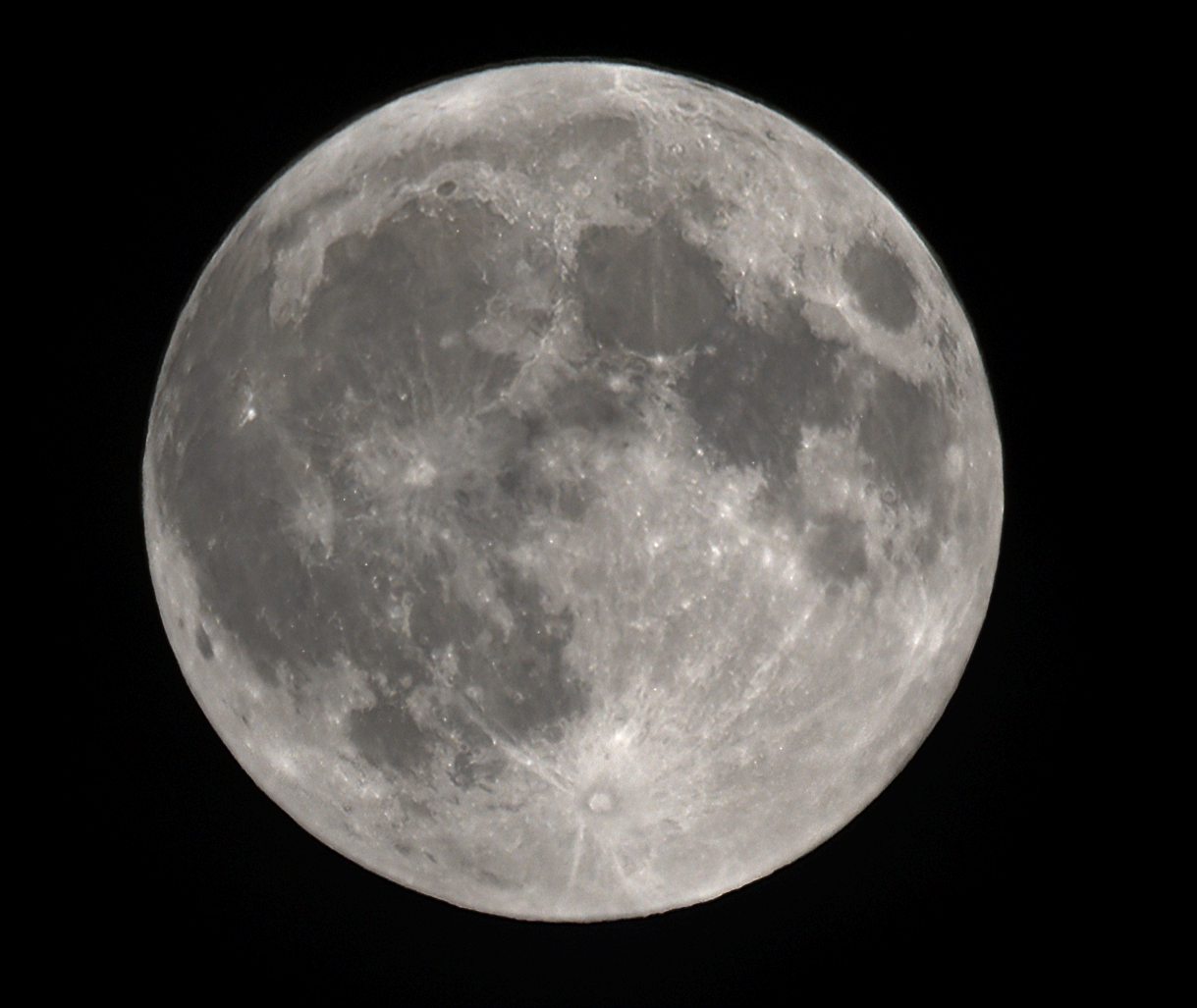
|
Jerry and I both had an interest in this event - me from a visual observer's perspective, him from an astroimager time-lapse photographer, and both of us from an amateur astronomer perspective as this was our first observed partial lunar eclipse. I had my 10x42 image-stabilized binoculars at the ready and the 10" Meade SCT. He took photos using his Nikon Z7 at 1/320 sec, f10 with a 400mm lens. Two chairs and a table were placed between the scope and the camera facing south for front row seat observing. Hot chocolate in our thermos and a bag of chips at the ready. We noticed a colour change in the eastern limb a little after 10 PM. Unfortunately, I didn't note the exact time in my log but Jerry captured the darkening beginning. |
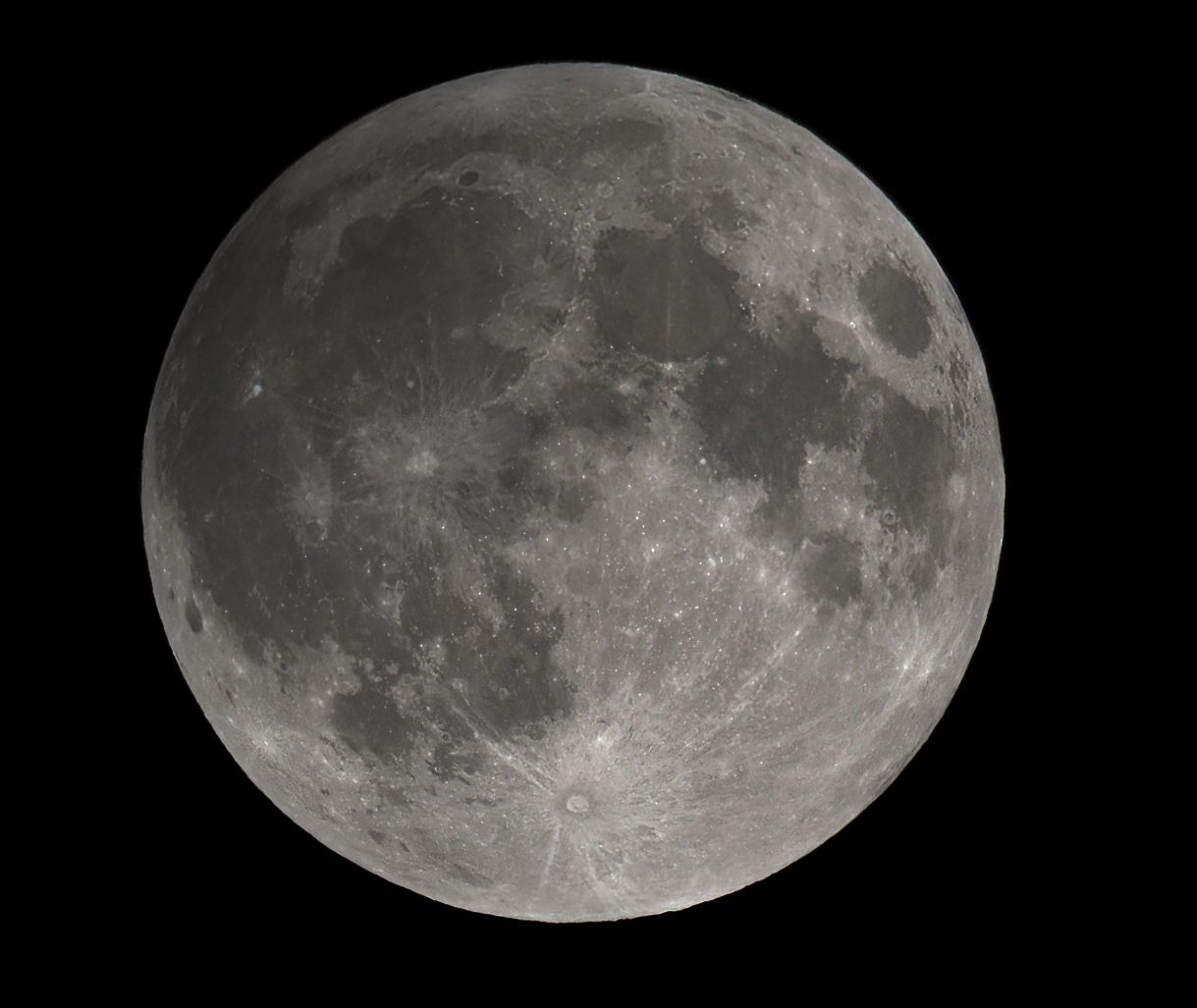
|
Time: 11:12 PM ADT
Equipment: Visual, 10x42 IS Binoculars, Telescope
Eyepiece: Celestron focal reducer/corrector - f6.3, Tele Vue 40mm Plössl eyepiece
Magnification: x39
The Moon would not "fit" in the scope's FOV. Jerry suggested adding the focal reducer which also provided a wider FOV and there it was - the full Moon in my FOV.
- Visually: The Moon appeared to have a flattened top. The area above Mare Frigoris had darkened but was still visible.
- Binoculars: Can make out Mare Frigoris but not the upper limb. Similar in darkness to the sky behind the Moon.
- Telescope: Can see the land mass in a darkened area but cannot discern the numerous craters known to be in the north polar area.
Time: 11:27 PM ADT
Equipment: Visual
The area over northern Oceanus Procellarum, Sinus Roris, Mare Imbrium, and Sinus Iridum seemed darker than other areas of the Moon.
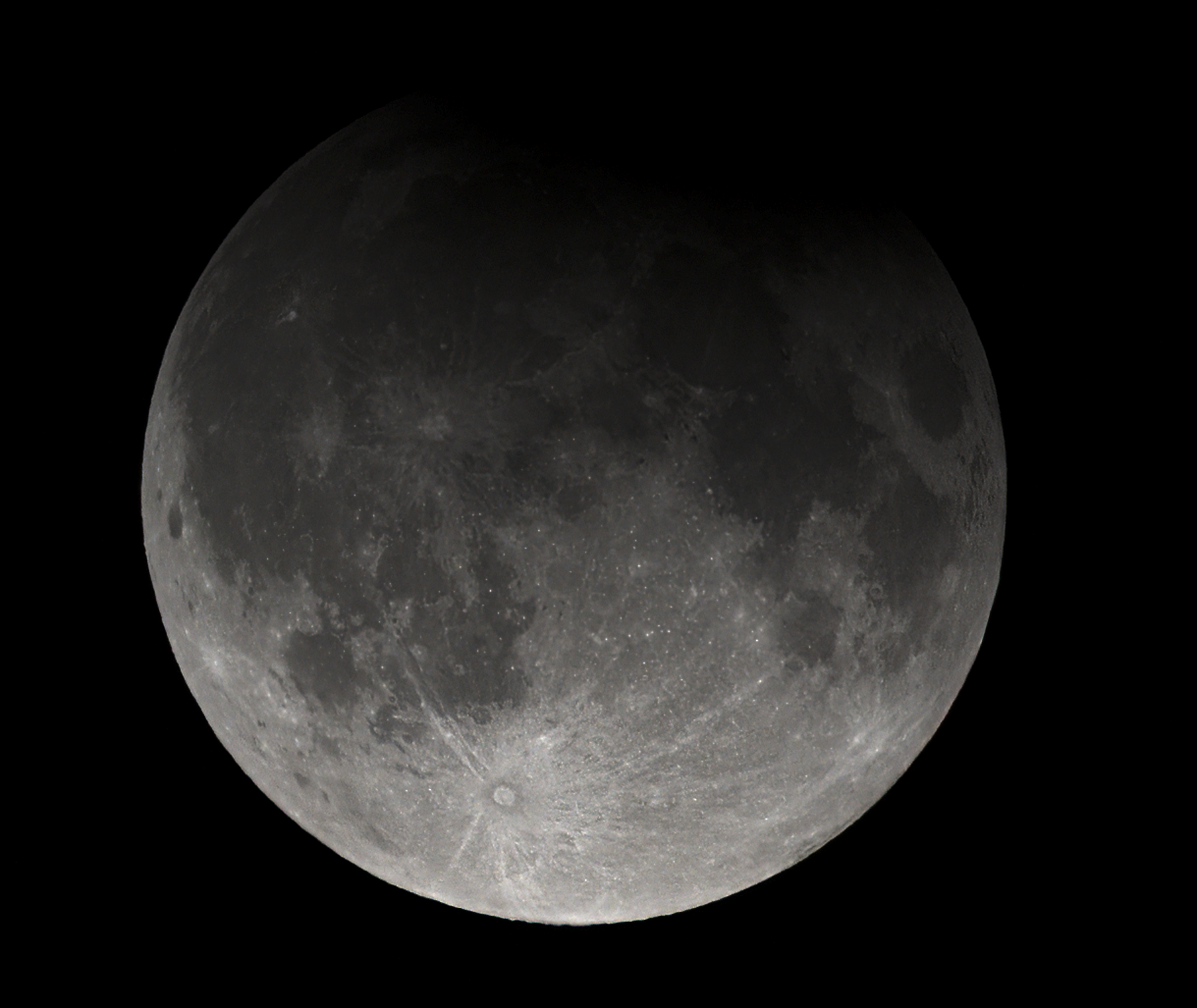
|
Time: 11:34 PM ADT
|
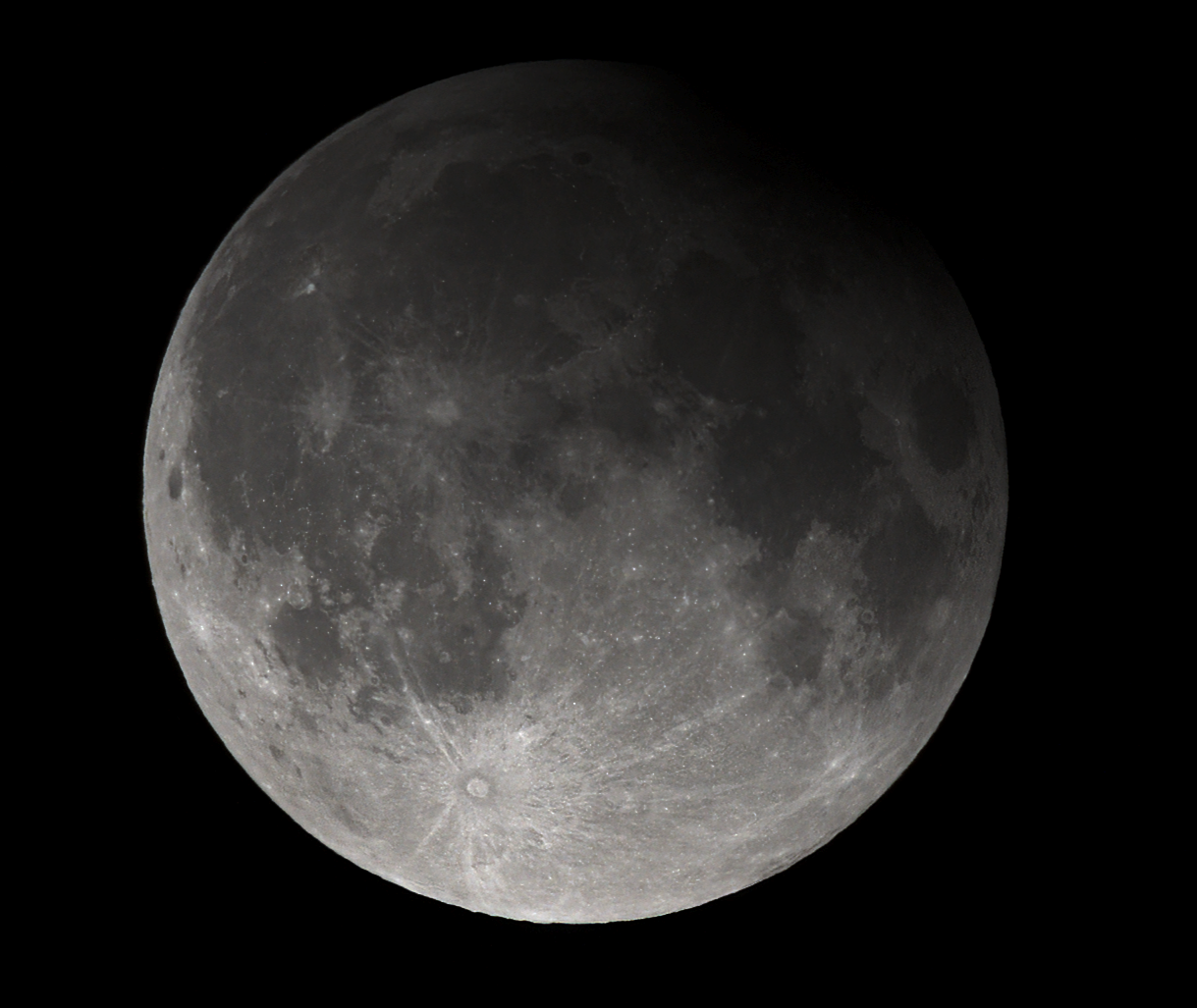
|
Time: 11:43 PM ADT Time: 11:59 PM ADT |
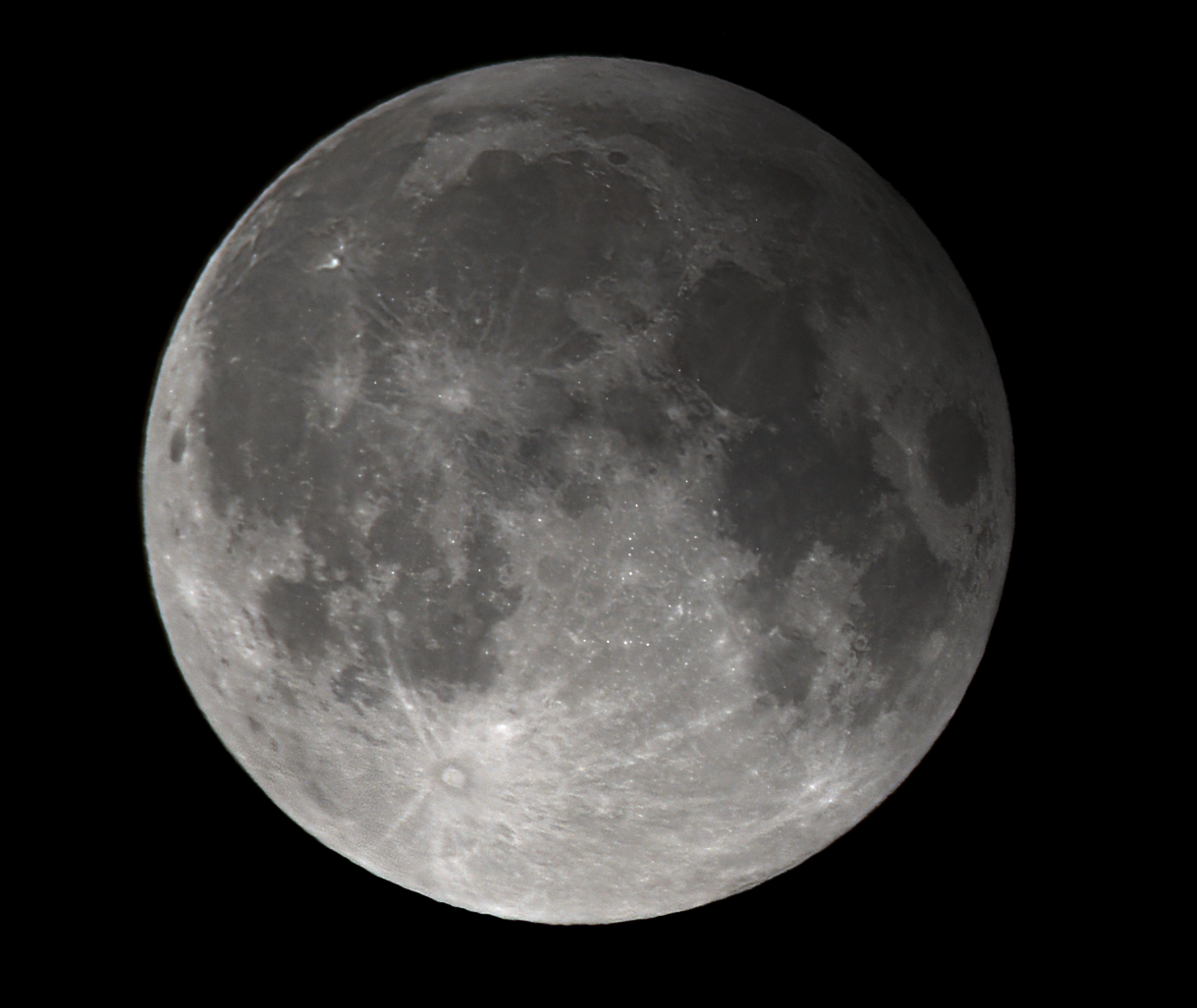
|
Time: 12:24 AM ADT |
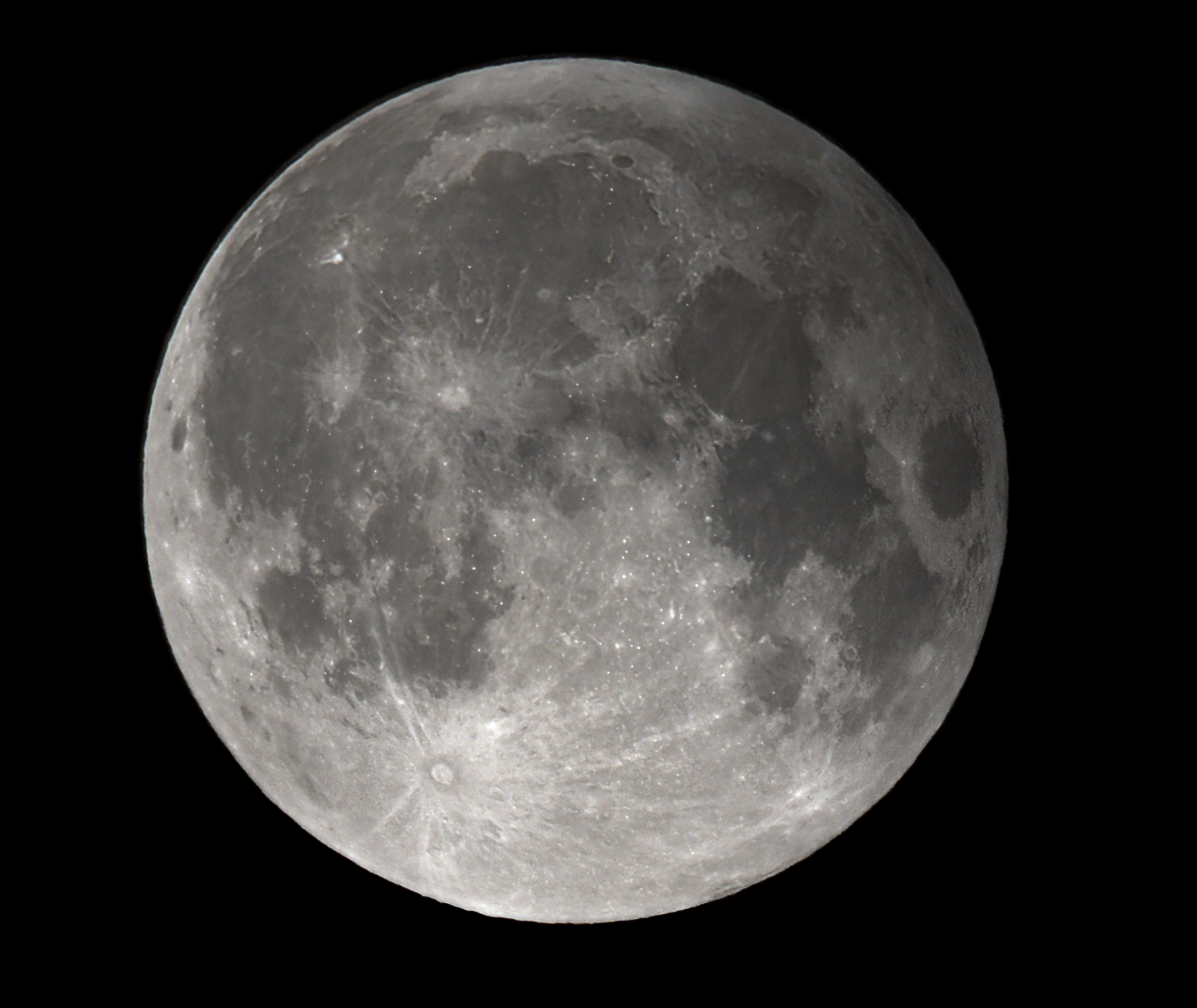
|
Time: not recorded |
IWLOP #L9: Ulugh Bay & Aston
Time: 1:10 AM - 1:45 AM ADT
Equipment: Telescope
Eyepiece: Antares Plössl 15mm
Magnification: x167
These craters weren't the easiest to find. The RASC Observer's Calendar depicted the favourable libration and to my surprise it meant L9 could possibly be found. Using my S&T Field Map of the Moon, I determined that if I went to Aristarchus and Herodotus (very easy craters to find) and looked to their west on Oceanus Procellarum (OP) to the crater Lichtenberg, the dark-floored Ulugh Bay was there. For more details of the challenges in finding these craters, refer to IWLOP #L9 - Ulugh Bay and Aston.
